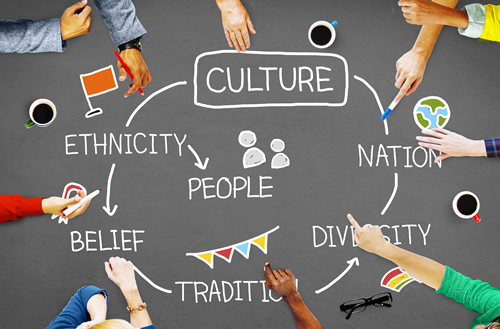In an increasingly interconnected world, fostering global awareness and cultural understanding is paramount in shaping well-rounded individuals. This blog post explores the transformative power of cultural exchange within the classroom, examining its significance in enhancing global awareness. From the benefits it offers to practical strategies for implementation, let’s embark on a journey to understand how cultural exchange can enrich students’ education and broaden their worldview.
1. Understanding the Significance of Global Awareness in Education
a. Defining Global Awareness
- Global Awareness: An understanding of and sensitivity to the cultural, social, economic, and political dynamics that shape the world.
b. Importance of Global Awareness in Education
- Cultural Competence: Global awareness cultivates cultural competence, preparing students to engage with diverse perspectives and navigate a globalized society.
- Interconnectedness: Fostering global awareness helps students recognize the interconnectedness of global issues and their roles as responsible global citizens.
c. Cultural Exchange as a Tool for Global Awareness
- Interactive Learning: Cultural exchange introduces interactive learning experiences, enabling students to engage directly with different cultures and traditions.
- Real-World Application: Cultural exchange provides a real-world application of classroom knowledge, making education more meaningful and impactful.
2. Benefits of Cultural Exchange in the Classroom
a. Cultural Understanding and Appreciation
- Breaking Stereotypes: Cultural exchange dispels stereotypes and promotes a more nuanced understanding of diverse cultures, fostering appreciation and respect.
- Personal Growth: Experiencing different cultures contributes to students’ personal growth, expanding their perspectives and worldview.
b. Enhanced Communication Skills
- Cross-Cultural Communication: Cultural exchange enhances cross-cultural communication skills, preparing students for effective communication in a globalized workforce.
- Language Proficiency: Immersing students in different linguistic environments can improve language proficiency and communication abilities.
c. Global Collaborations and Networking
- International Connections: Cultural exchange facilitates global collaborations, enabling students to build international networks and connections.
- Career Opportunities: Exposure to diverse perspectives and networks broadens students’ career opportunities in an increasingly global job market.
d. Empathy and Social Responsibility
- Developing Empathy: Cultural exchange fosters empathy by allowing students to understand and relate to the experiences of individuals from different cultural backgrounds.
- Cultivating Social Responsibility: Encountering global challenges firsthand encourages students to cultivate a sense of social responsibility and a commitment to positive change.
3. Practical Strategies for Implementing Cultural Exchange in the Classroom
a. International Student Exchange Programs
- Partnering with Schools Abroad: Establish partnerships with schools in different countries to facilitate student exchange programs, promoting direct cultural immersion.
- Structured Curriculum: Develop a structured curriculum that integrates international perspectives, ensuring a seamless blend of cultural exchange and academic learning.
b. Virtual Cultural Exchange Platforms
- Online Collaboration: Utilize virtual platforms to connect classrooms across borders, allowing students to collaborate on projects and engage in virtual cultural exchange.
- Virtual Guest Speakers: Invite guest speakers from different countries to virtually address the class, sharing insights into their cultures and experiences.
c. Cultural Events and Celebrations
- International Days: Organize events celebrating international days, where students can showcase and learn about various cultural traditions, cuisines, and customs.
- Festivals and Holidays: Incorporate global festivals and holidays into the curriculum, providing opportunities for students to explore diverse cultural practices.
d. Multicultural Reading and Learning Materials
- Diverse Reading Lists: Include books and learning materials from authors representing different cultures and perspectives, fostering a diverse literary experience.
- Multicultural Education Resources: Integrate online resources and educational platforms that offer diverse perspectives and content related to global issues.
4. Overcoming Challenges in Cultural Exchange Programs
a. Language Barriers
- Challenge: Language differences may pose barriers to effective communication and learning in cultural exchange programs.
- Solution: Implement language support programs, including language learning resources and translation tools, to bridge communication gaps.
b. Logistical and Financial Constraints
- Challenge: Logistical and financial constraints may hinder the implementation of international exchange programs.
- Solution: Seek partnerships with organizations, explore grant opportunities, and implement cost-sharing models to make cultural exchange more accessible.
c. Cultural Sensitivity
- Challenge: Lack of cultural sensitivity may lead to misunderstandings and conflicts during cultural exchange programs.
- Solution: Provide cultural sensitivity training for both students and educators, emphasizing the importance of respect, open-mindedness, and effective cross-cultural communication.
5. Measuring the Impact of Cultural Exchange on Classroom Global Awareness
a. Quantitative Assessments
- Pre- and Post-Program Surveys: Conduct pre- and post-program surveys to measure changes in students’ cultural awareness, attitudes, and knowledge.
- Academic Performance Metrics: Analyze academic performance metrics to identify correlations between cultural exchange participation and academic success.
b. Qualitative Feedback
- Student Reflections: Encourage students to maintain journals or participate in reflective activities, capturing their personal growth, insights, and transformative experiences.
- Teacher Observations: Gather feedback from educators through observations, interviews, and discussions to assess the impact on classroom dynamics and learning outcomes.
c. Long-Term Outcomes
- Post-Education Surveys: Conduct surveys with alumni of cultural exchange programs to assess long-term outcomes, including career paths, global perspectives, and continued cultural engagement.
- Alumni Success Stories: Share success stories of program alumni who have made significant contributions to their communities or fields, attributing their success to cultural exchange experiences.
6. Success Stories and Testimonials
a. Individual Student Transformations
- Success: Share stories of individual students who experienced transformative personal and academic growth through cultural exchange programs.
- Testimonials: Feature testimonials from students expressing the lasting impact of cultural exchange on their perspectives, goals, and aspirations.
b. Educator Perspectives
- Success: Highlight the perspectives of educators who have witnessed positive transformations in students’ global awareness and cultural understanding.
- Best Practices: Share best practices from educators who have successfully implemented cultural exchange programs, emphasizing key strategies and outcomes.
Conclusion
In conclusion, cultural exchange within the classroom emerges as a powerful tool for enhancing global awareness, fostering cultural understanding, and preparing students for a diverse and interconnected world. By embracing the benefits, implementing practical strategies, and overcoming challenges, educators can play a pivotal role in shaping students into global citizens equipped with the skills and perspectives needed for success in the 21st century.
